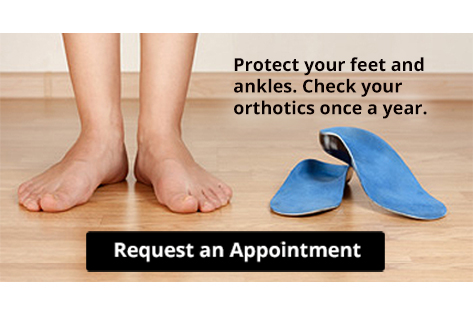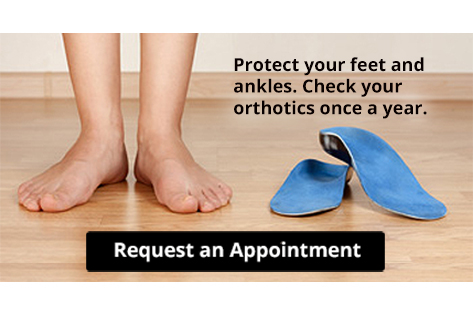Connect With Us
Blog
Items filtered by date: June 2018
What are the Different Types of Corns?
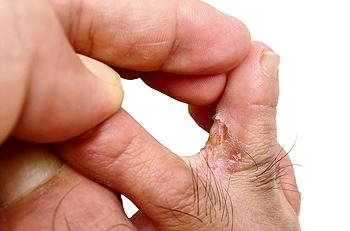 Corns will typically develop on the pinky toe or between the toes as a result of pressure and friction. A common cause of the development of this condition, is from shoes that do not fit correctly, which causes the toes to have inadequate room to move about. This painful ailment may cause pain to exist inside the toe, and this may be a result of the pressure that is exerted on sensitive nerves. Corns are divided into two categories, and are referred to as hard or soft corns. The latter will exist in between the toes and will thrive in moist environments. Hard corns typically form on the tops of the toes where that portion of the toe meets the shoe. Corns can be prevented by choosing to wear shoes that fit properly. If you are experiencing hard or soft corns, it’s advised to consult with a podiatrist who can suggest proper treatment options that are correct for you.
Corns will typically develop on the pinky toe or between the toes as a result of pressure and friction. A common cause of the development of this condition, is from shoes that do not fit correctly, which causes the toes to have inadequate room to move about. This painful ailment may cause pain to exist inside the toe, and this may be a result of the pressure that is exerted on sensitive nerves. Corns are divided into two categories, and are referred to as hard or soft corns. The latter will exist in between the toes and will thrive in moist environments. Hard corns typically form on the tops of the toes where that portion of the toe meets the shoe. Corns can be prevented by choosing to wear shoes that fit properly. If you are experiencing hard or soft corns, it’s advised to consult with a podiatrist who can suggest proper treatment options that are correct for you.
Corns can make walking very painful and should be treated immediately. If you have questions regarding your feet and ankles, contact one of our podiatrists of New England Foot and Ankle. Our doctors will treat your foot and ankle needs.
Corns: What Are They? And How Do You Get Rid of Them?
Corns are thickened areas on the skin that can become painful. They are caused by excessive pressure and friction on the skin. Corns press into the deeper layers of the skin and are usually round in shape.
Ways to Prevent Corns
There are many ways to get rid of painful corns such as:
- Wearing properly fitting shoes that have been measured by a professional
- Wearing shoes that are not sharply pointed or have high heels
- Wearing only shoes that offer support
Treating Corns
Although most corns slowly disappear when the friction or pressure stops, this isn’t always the case. Consult with your podiatrist to determine the best treatment option for your case of corns.
If you have any questions please feel free to contact one of our offices located in Chelmsford and Newburyport, MA . We offer the newest diagnostic and treatment technologies for all your foot and ankle needs.
What are the Different Types of Corns?
 Corns will typically develop on the pinky toe or between the toes as a result of pressure and friction. A common cause of the development of this condition, is from shoes that do not fit correctly, which causes the toes to have inadequate room to move about. This painful ailment may cause pain to exist inside the toe, and this may be a result of the pressure that is exerted on sensitive nerves. Corns are divided into two categories, and are referred to as hard or soft corns. The latter will exist in between the toes and will thrive in moist environments. Hard corns typically form on the tops of the toes where that portion of the toe meets the shoe. Corns can be prevented by choosing to wear shoes that fit properly. If you are experiencing hard or soft corns, it’s advised to consult with a podiatrist who can suggest proper treatment options that are correct for you.
Corns will typically develop on the pinky toe or between the toes as a result of pressure and friction. A common cause of the development of this condition, is from shoes that do not fit correctly, which causes the toes to have inadequate room to move about. This painful ailment may cause pain to exist inside the toe, and this may be a result of the pressure that is exerted on sensitive nerves. Corns are divided into two categories, and are referred to as hard or soft corns. The latter will exist in between the toes and will thrive in moist environments. Hard corns typically form on the tops of the toes where that portion of the toe meets the shoe. Corns can be prevented by choosing to wear shoes that fit properly. If you are experiencing hard or soft corns, it’s advised to consult with a podiatrist who can suggest proper treatment options that are correct for you.
Corns can make walking very painful and should be treated immediately. If you have questions regarding your feet and ankles, contact one of our podiatrists of New England Foot and Ankle. Our doctors will treat your foot and ankle needs.
Corns: What Are They? And How Do You Get Rid of Them?
Corns are thickened areas on the skin that can become painful. They are caused by excessive pressure and friction on the skin. Corns press into the deeper layers of the skin and are usually round in shape.
Ways to Prevent Corns
There are many ways to get rid of painful corns such as:
- Wearing properly fitting shoes that have been measured by a professional
- Wearing shoes that are not sharply pointed or have high heels
- Wearing only shoes that offer support
Treating Corns
Although most corns slowly disappear when the friction or pressure stops, this isn’t always the case. Consult with your podiatrist to determine the best treatment option for your case of corns.
If you have any questions please feel free to contact one of our offices located in Chelmsford and Newburyport, MA . We offer the newest diagnostic and treatment technologies for all your foot and ankle needs.
Read more about Corns: What Are They, and How Do You Get Rid of ThemCommon Foot Ailments in Pregnant Women
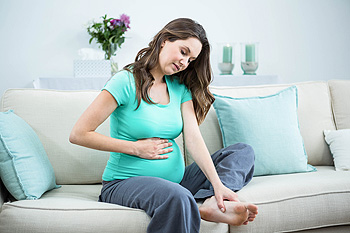 It’s common for pregnant women to complain about foot pain or swollen feet. Developing flat feet is equally as common, and this is typically a result of the excess weight that is gained from the developing fetus. Research has shown that this may affect a women’s center of gravity, which may alter overall posture. Despite the fact that most of these uncomfortable ailments may diminish after pregnancy, there are ways to minimize the discomfort they cause. These may include elevating the feet above the heart, which may aid in improving circulation in the early stages of pregnancy. It is beneficial to eat a well-balanced and healthy diet, which involves lower salt content. This can possibly eliminate excess fluid from accumulating. It’s also suggested to sleep on your side rather than on your back. Practicing gentle exercises may aid the decrease of fluid retention. Please consult with a podiatrist for additional information on how pregnancy affects your feet.
It’s common for pregnant women to complain about foot pain or swollen feet. Developing flat feet is equally as common, and this is typically a result of the excess weight that is gained from the developing fetus. Research has shown that this may affect a women’s center of gravity, which may alter overall posture. Despite the fact that most of these uncomfortable ailments may diminish after pregnancy, there are ways to minimize the discomfort they cause. These may include elevating the feet above the heart, which may aid in improving circulation in the early stages of pregnancy. It is beneficial to eat a well-balanced and healthy diet, which involves lower salt content. This can possibly eliminate excess fluid from accumulating. It’s also suggested to sleep on your side rather than on your back. Practicing gentle exercises may aid the decrease of fluid retention. Please consult with a podiatrist for additional information on how pregnancy affects your feet.
Pregnant women with swollen feet can be treated with a variety of different methods that are readily available. For more information about other cures for swollen feet during pregnancy, consult with one of our podiatrists from New England Foot and Ankle. Our doctors will attend to all of your foot and ankle needs.
What Foot Problems Can Arise During Pregnancy?
One problem that can occur is overpronation, which occurs when the arch of the foot flattens and tends to roll inward. This can cause pain and discomfort in your heels while you’re walking or even just standing up, trying to support your baby.
Another problem is edema, or swelling in the extremities. This often affects the feet during pregnancy but tends to occur in the later stages.
How Can I Keep My Feet Healthy During Pregnancy?
- Wearing orthotics can provide extra support for the feet and help distribute weight evenly
- Minimize the amount of time spent walking barefoot
- Wear shoes with good arch support
- Wear shoes that allow for good circulation to the feet
- Elevate feet if you experience swelling
- Massage your feet
- Get regular, light exercise, such as walking, to promote blood circulation to the feet
If you have any questions please feel free to contact one of our offices located in Chelmsford and Newburyport, MA . We offer the newest diagnostic and treatment technologies for all your foot and ankle needs.
Common Foot Ailments in Pregnant Women
 It’s common for pregnant women to complain about foot pain or swollen feet. Developing flat feet is equally as common, and this is typically a result of the excess weight that is gained from the developing fetus. Research has shown that this may affect a women’s center of gravity, which may alter overall posture. Despite the fact that most of these uncomfortable ailments may diminish after pregnancy, there are ways to minimize the discomfort they cause. These may include elevating the feet above the heart, which may aid in improving circulation in the early stages of pregnancy. It is beneficial to eat a well-balanced and healthy diet, which involves lower salt content. This can possibly eliminate excess fluid from accumulating. It’s also suggested to sleep on your side rather than on your back. Practicing gentle exercises may aid the decrease of fluid retention. Please consult with a podiatrist for additional information on how pregnancy affects your feet.
It’s common for pregnant women to complain about foot pain or swollen feet. Developing flat feet is equally as common, and this is typically a result of the excess weight that is gained from the developing fetus. Research has shown that this may affect a women’s center of gravity, which may alter overall posture. Despite the fact that most of these uncomfortable ailments may diminish after pregnancy, there are ways to minimize the discomfort they cause. These may include elevating the feet above the heart, which may aid in improving circulation in the early stages of pregnancy. It is beneficial to eat a well-balanced and healthy diet, which involves lower salt content. This can possibly eliminate excess fluid from accumulating. It’s also suggested to sleep on your side rather than on your back. Practicing gentle exercises may aid the decrease of fluid retention. Please consult with a podiatrist for additional information on how pregnancy affects your feet.
Pregnant women with swollen feet can be treated with a variety of different methods that are readily available. For more information about other cures for swollen feet during pregnancy, consult with one of our podiatrists from New England Foot and Ankle. Our doctors will attend to all of your foot and ankle needs.
What Foot Problems Can Arise During Pregnancy?
One problem that can occur is overpronation, which occurs when the arch of the foot flattens and tends to roll inward. This can cause pain and discomfort in your heels while you’re walking or even just standing up, trying to support your baby.
Another problem is edema, or swelling in the extremities. This often affects the feet during pregnancy but tends to occur in the later stages.
How Can I Keep My Feet Healthy During Pregnancy?
- Wearing orthotics can provide extra support for the feet and help distribute weight evenly
- Minimize the amount of time spent walking barefoot
- Wear shoes with good arch support
- Wear shoes that allow for good circulation to the feet
- Elevate feet if you experience swelling
- Massage your feet
- Get regular, light exercise, such as walking, to promote blood circulation to the feet
If you have any questions please feel free to contact one of our offices located in Chelmsford and Newburyport, MA . We offer the newest diagnostic and treatment technologies for all your foot and ankle needs.
Read more about Pregnancy and Foot HealthReminder: When Was the Last Time...?
Reminder: When Was the Last Time...?
What is the Achilles Tendon?
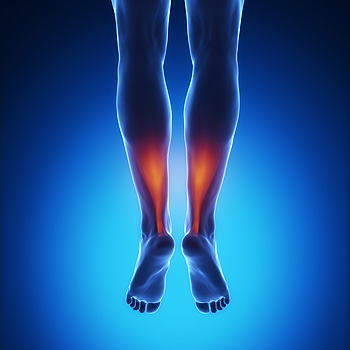 The longest tendon in the body is referred to as the Achilles tendon. Its location lies in the back of the foot and its purpose is to connect the heel bone to the calf. Research has shown that it may become damaged or torn as a result of a sudden injury, and it’s advised to seek treatment as soon as possible. Typical symptoms of an Achilles tendon rupture may include difficulty in standing on tiptoes in addition to bruising and swelling at the point of an injury. In order to obtain a proper diagnosis, a podiatrist may use a method referred to as the Thompson’s test. This involves squeezing the calf muscles while lying face down so movement in the ankle can be observed. For severe tears, surgery may be a necessary option as a permanent solution which may prevent the tendon from re-rupturing. For less severe tears, it may be advantageous to wear a brace or a cast so healing can commence. Please consult with a podiatrist for additional information about Achilles tendon injuries.
The longest tendon in the body is referred to as the Achilles tendon. Its location lies in the back of the foot and its purpose is to connect the heel bone to the calf. Research has shown that it may become damaged or torn as a result of a sudden injury, and it’s advised to seek treatment as soon as possible. Typical symptoms of an Achilles tendon rupture may include difficulty in standing on tiptoes in addition to bruising and swelling at the point of an injury. In order to obtain a proper diagnosis, a podiatrist may use a method referred to as the Thompson’s test. This involves squeezing the calf muscles while lying face down so movement in the ankle can be observed. For severe tears, surgery may be a necessary option as a permanent solution which may prevent the tendon from re-rupturing. For less severe tears, it may be advantageous to wear a brace or a cast so healing can commence. Please consult with a podiatrist for additional information about Achilles tendon injuries.
Achilles tendon injuries need immediate attention to avoid future complications. If you have any concerns, contact one of our podiatrists of New England Foot and Ankle. Our doctors can provide the care you need to keep you pain-free and on your feet.
What Is the Achilles Tendon?
The Achilles tendon is a tendon that connects the lower leg muscles and calf to the heel of the foot. It is the strongest tendon in the human body and is essential for making movement possible. Because this tendon is such an integral part of the body, any injuries to it can create immense difficulties and should immediately be presented to a doctor.
What Are the Symptoms of an Achilles Tendon Injury?
There are various types of injuries that can affect the Achilles tendon. The two most common injuries are Achilles tendinitis and ruptures of the tendon.
Achilles Tendinitis Symptoms
- Inflammation
- Dull to severe pain
- Increased blood flow to the tendon
- Thickening of the tendon
Rupture Symptoms
- Extreme pain and swelling in the foot
- Total immobility
Treatment and Prevention
Achilles tendon injuries are diagnosed by a thorough physical evaluation, which can include an MRI. Treatment involves rest, physical therapy, and in some cases, surgery. However, various preventative measures can be taken to avoid these injuries, such as:
- Thorough stretching of the tendon before and after exercise
- Strengthening exercises like calf raises, squats, leg curls, leg extensions, leg raises, lunges, and leg presses
If you have any questions please feel free to contact one of our offices located in Chelmsford and Newburyport, MA . We offer the newest diagnostic tools and technology to treat your foot and ankle needs.
What is the Achilles Tendon?
 The longest tendon in the body is referred to as the Achilles tendon. Its location lies in the back of the foot and its purpose is to connect the heel bone to the calf. Research has shown that it may become damaged or torn as a result of a sudden injury, and it’s advised to seek treatment as soon as possible. Typical symptoms of an Achilles tendon rupture may include difficulty in standing on tiptoes in addition to bruising and swelling at the point of an injury. In order to obtain a proper diagnosis, a podiatrist may use a method referred to as the Thompson’s test. This involves squeezing the calf muscles while lying face down so movement in the ankle can be observed. For severe tears, surgery may be a necessary option as a permanent solution which may prevent the tendon from re-rupturing. For less severe tears, it may be advantageous to wear a brace or a cast so healing can commence. Please consult with a podiatrist for additional information about Achilles tendon injuries.
The longest tendon in the body is referred to as the Achilles tendon. Its location lies in the back of the foot and its purpose is to connect the heel bone to the calf. Research has shown that it may become damaged or torn as a result of a sudden injury, and it’s advised to seek treatment as soon as possible. Typical symptoms of an Achilles tendon rupture may include difficulty in standing on tiptoes in addition to bruising and swelling at the point of an injury. In order to obtain a proper diagnosis, a podiatrist may use a method referred to as the Thompson’s test. This involves squeezing the calf muscles while lying face down so movement in the ankle can be observed. For severe tears, surgery may be a necessary option as a permanent solution which may prevent the tendon from re-rupturing. For less severe tears, it may be advantageous to wear a brace or a cast so healing can commence. Please consult with a podiatrist for additional information about Achilles tendon injuries.
Achilles tendon injuries need immediate attention to avoid future complications. If you have any concerns, contact one of our podiatrists of New England Foot and Ankle. Our doctors can provide the care you need to keep you pain-free and on your feet.
What Is the Achilles Tendon?
The Achilles tendon is a tendon that connects the lower leg muscles and calf to the heel of the foot. It is the strongest tendon in the human body and is essential for making movement possible. Because this tendon is such an integral part of the body, any injuries to it can create immense difficulties and should immediately be presented to a doctor.
What Are the Symptoms of an Achilles Tendon Injury?
There are various types of injuries that can affect the Achilles tendon. The two most common injuries are Achilles tendinitis and ruptures of the tendon.
Achilles Tendinitis Symptoms
- Inflammation
- Dull to severe pain
- Increased blood flow to the tendon
- Thickening of the tendon
Rupture Symptoms
- Extreme pain and swelling in the foot
- Total immobility
Treatment and Prevention
Achilles tendon injuries are diagnosed by a thorough physical evaluation, which can include an MRI. Treatment involves rest, physical therapy, and in some cases, surgery. However, various preventative measures can be taken to avoid these injuries, such as:
- Thorough stretching of the tendon before and after exercise
- Strengthening exercises like calf raises, squats, leg curls, leg extensions, leg raises, lunges, and leg presses
If you have any questions please feel free to contact one of our offices located in Chelmsford and Newburyport, MA . We offer the newest diagnostic tools and technology to treat your foot and ankle needs.
Read more about What are Achilles Tendon InjuriesDisadvantages of Wearing High Heels
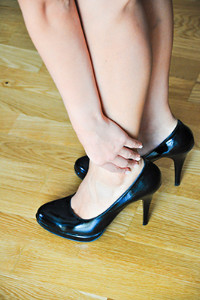 Wearing high heels may possibly be the reason why many women experience foot pain. Despite the fact that most women think high heels flatter the appearance of their legs, several issues may develop as a result of wearing this type of shoe. When high heels are worn, the foot is often in an unnatural position, which may inhibit blood circulation to the feet. The purpose of the Achilles tendon is to connect the calf to the heel. A disadvantage of wearing high heels is that heels may cause this tendon to become stiff and inflamed, possibly resulting in the development of additional foot ailments. Recent research has shown that moderation is the key to wearing high heels, and limiting the number of days they are worn may benefit the overall well-being of the foot. If you experience discomfort and pain from wearing high heels, please consult with a podiatrist to learn about proper stretching techniques for the foot.
Wearing high heels may possibly be the reason why many women experience foot pain. Despite the fact that most women think high heels flatter the appearance of their legs, several issues may develop as a result of wearing this type of shoe. When high heels are worn, the foot is often in an unnatural position, which may inhibit blood circulation to the feet. The purpose of the Achilles tendon is to connect the calf to the heel. A disadvantage of wearing high heels is that heels may cause this tendon to become stiff and inflamed, possibly resulting in the development of additional foot ailments. Recent research has shown that moderation is the key to wearing high heels, and limiting the number of days they are worn may benefit the overall well-being of the foot. If you experience discomfort and pain from wearing high heels, please consult with a podiatrist to learn about proper stretching techniques for the foot.
High heels have a history of causing foot and ankle problems. If you have any concerns about your feet or ankles, contact one of our podiatrists from New England Foot and Ankle. Our doctors can provide the care you need to keep you pain-free and on your feet.
Effects of High Heels on the Feet
High heels are popular shoes among women because of their many styles and societal appeal. Despite this, high heels can still cause many health problems if worn too frequently.
Which Parts of My Body Will Be Affected by High Heels?
- Ankle Joints
- Achilles Tendon – May shorten and stiffen with prolonged wear
- Balls of the Feet
- Knees – Heels cause the knees to bend constantly, creating stress on them
- Back – They decrease the spine’s ability to absorb shock, which may lead to back pain. The vertebrae of the lower back may compress.
What Kinds of Foot Problems Can Develop from Wearing High Heels?
- Corns
- Calluses
- Hammertoe
- Bunions
- Morton’s Neuroma
- Plantar Fasciitis
How Can I Still Wear High Heels and Maintain Foot Health?
If you want to wear high heeled shoes, make sure that you are not wearing them every day, as this will help prevent long term physical problems. Try wearing thicker heels as opposed to stilettos to distribute weight more evenly across the feet. Always make sure you are wearing the proper shoes for the right occasion, such as sneakers for exercising. If you walk to work, try carrying your heels with you and changing into them once you arrive at work. Adding inserts to your heels can help cushion your feet and absorb shock. Full foot inserts or metatarsal pads are available.
If you have any questions please feel free to contact one of our offices located in Chelmsford and Newburyport, MA . We offer the newest diagnostic and treatment technologies for all your foot and ankle needs.
Disadvantages of Wearing High Heels
 Wearing high heels may possibly be the reason why many women experience foot pain. Despite the fact that most women think high heels flatter the appearance of their legs, several issues may develop as a result of wearing this type of shoe. When high heels are worn, the foot is often in an unnatural position, which may inhibit blood circulation to the feet. The purpose of the Achilles tendon is to connect the calf to the heel. A disadvantage of wearing high heels is that heels may cause this tendon to become stiff and inflamed, possibly resulting in the development of additional foot ailments. Recent research has shown that moderation is the key to wearing high heels, and limiting the number of days they are worn may benefit the overall well-being of the foot. If you experience discomfort and pain from wearing high heels, please consult with a podiatrist to learn about proper stretching techniques for the foot.
Wearing high heels may possibly be the reason why many women experience foot pain. Despite the fact that most women think high heels flatter the appearance of their legs, several issues may develop as a result of wearing this type of shoe. When high heels are worn, the foot is often in an unnatural position, which may inhibit blood circulation to the feet. The purpose of the Achilles tendon is to connect the calf to the heel. A disadvantage of wearing high heels is that heels may cause this tendon to become stiff and inflamed, possibly resulting in the development of additional foot ailments. Recent research has shown that moderation is the key to wearing high heels, and limiting the number of days they are worn may benefit the overall well-being of the foot. If you experience discomfort and pain from wearing high heels, please consult with a podiatrist to learn about proper stretching techniques for the foot.
High heels have a history of causing foot and ankle problems. If you have any concerns about your feet or ankles, contact one of our podiatrists from New England Foot and Ankle. Our doctors can provide the care you need to keep you pain-free and on your feet.
Effects of High Heels on the Feet
High heels are popular shoes among women because of their many styles and societal appeal. Despite this, high heels can still cause many health problems if worn too frequently.
Which Parts of My Body Will Be Affected by High Heels?
- Ankle Joints
- Achilles Tendon – May shorten and stiffen with prolonged wear
- Balls of the Feet
- Knees – Heels cause the knees to bend constantly, creating stress on them
- Back – They decrease the spine’s ability to absorb shock, which may lead to back pain. The vertebrae of the lower back may compress.
What Kinds of Foot Problems Can Develop from Wearing High Heels?
- Corns
- Calluses
- Hammertoe
- Bunions
- Morton’s Neuroma
- Plantar Fasciitis
How Can I Still Wear High Heels and Maintain Foot Health?
If you want to wear high heeled shoes, make sure that you are not wearing them every day, as this will help prevent long term physical problems. Try wearing thicker heels as opposed to stilettos to distribute weight more evenly across the feet. Always make sure you are wearing the proper shoes for the right occasion, such as sneakers for exercising. If you walk to work, try carrying your heels with you and changing into them once you arrive at work. Adding inserts to your heels can help cushion your feet and absorb shock. Full foot inserts or metatarsal pads are available.
If you have any questions please feel free to contact one of our offices located in Chelmsford and Newburyport, MA . We offer the newest diagnostic and treatment technologies for all your foot and ankle needs.
Read more about Effect of High Heels on the FeetBlog Archives
- April 2025
- March 2025
- February 2025
- January 2025
- December 2024
- November 2024
- October 2024
- September 2024
- August 2024
- July 2024
- June 2024
- May 2024
- April 2024
- March 2024
- February 2024
- January 2024
- December 2023
- November 2023
- October 2023
- September 2023
- August 2023
- July 2023
- June 2023
- May 2023
- April 2023
- March 2023
- February 2023
- January 2023
- December 2022
- November 2022
- October 2022
- September 2022
- August 2022
- July 2022
- June 2022
- May 2022
- April 2022
- March 2022
- February 2022
- January 2022
- December 2021
- November 2021
- October 2021
- September 2021
- August 2021
- July 2021
- June 2021
- May 2021
- April 2021
- March 2021
- February 2021
- January 2021
- December 2020
- November 2020
- October 2020
- September 2020
- August 2020
- July 2020
- June 2020
- May 2020
- April 2020
- March 2020
- February 2020
- January 2020
- December 2019
- November 2019
- October 2019
- September 2019
- August 2019
- July 2019
- June 2019
- May 2019
- April 2019
- March 2019
- February 2019
- January 2019
- December 2018
- November 2018
- October 2018
- September 2018
- August 2018
- July 2018
- June 2018
- May 2018
- April 2018
- March 2018
- February 2018
- January 2018
- December 2017
- November 2017
- October 2017
- September 2017
- August 2017
- July 2017
- June 2017
- May 2017
- April 2017
- March 2017
- February 2017
- March 2016
